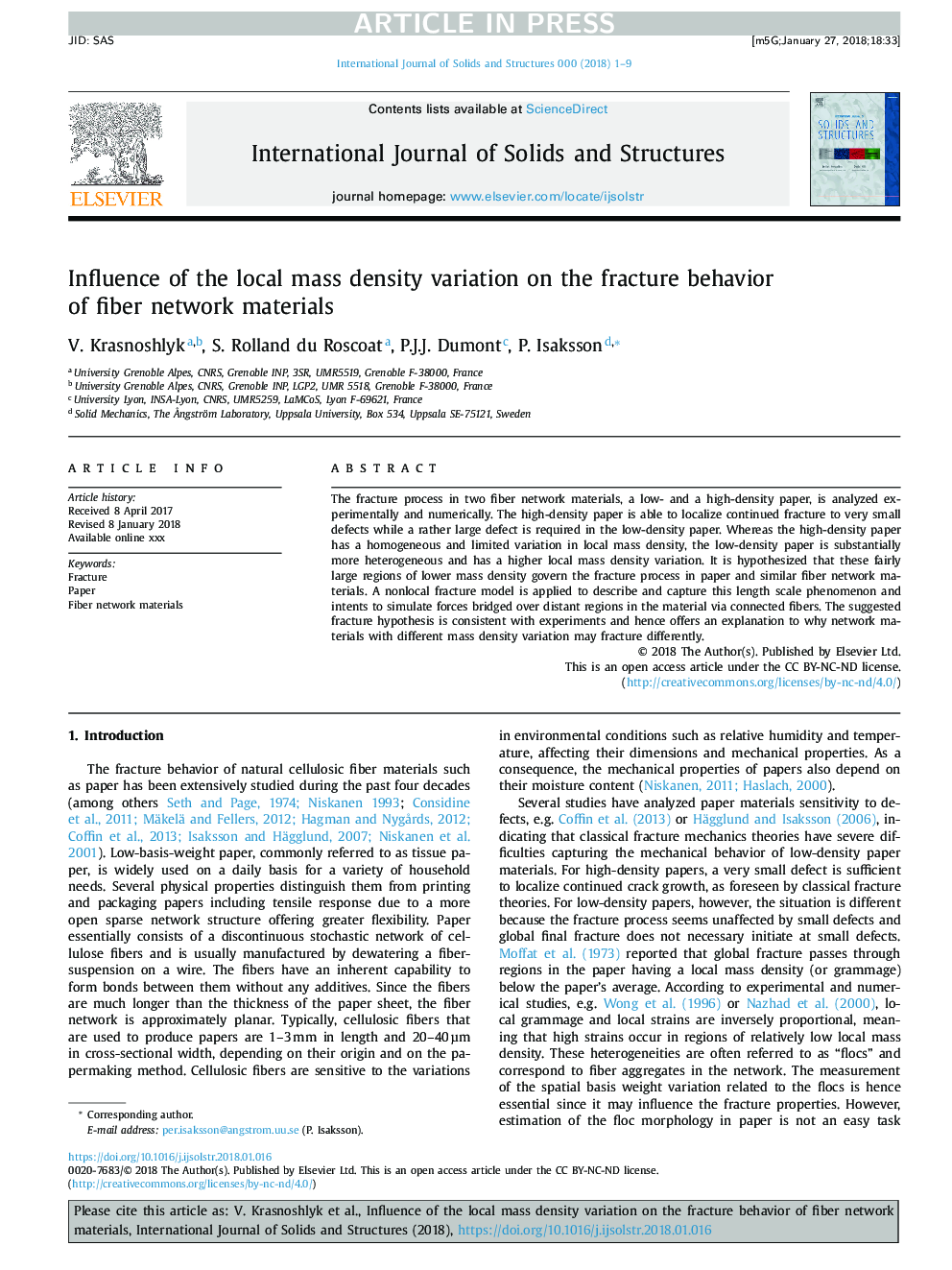| Article ID | Journal | Published Year | Pages | File Type |
|---|---|---|---|---|
| 6748375 | International Journal of Solids and Structures | 2018 | 9 Pages |
Abstract
The fracture process in two fiber network materials, a low- and a high-density paper, is analyzed experimentally and numerically. The high-density paper is able to localize continued fracture to very small defects while a rather large defect is required in the low-density paper. Whereas the high-density paper has a homogeneous and limited variation in local mass density, the low-density paper is substantially more heterogeneous and has a higher local mass density variation. It is hypothesized that these fairly large regions of lower mass density govern the fracture process in paper and similar fiber network materials. A nonlocal fracture model is applied to describe and capture this length scale phenomenon and intents to simulate forces bridged over distant regions in the material via connected fibers. The suggested fracture hypothesis is consistent with experiments and hence offers an explanation to why network materials with different mass density variation may fracture differently.
Related Topics
Physical Sciences and Engineering
Engineering
Civil and Structural Engineering
Authors
V. Krasnoshlyk, S. Rolland du Roscoat, P.J.J. Dumont, P. Isaksson,
